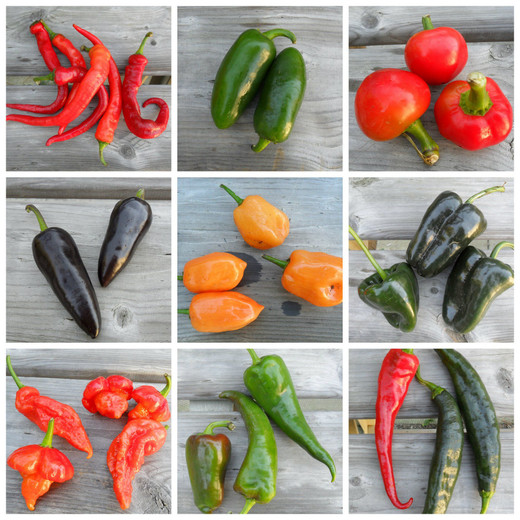Growing Peppers in a Greenhouse
7th Mar 2023
As we move into cooler weather, peppers are a great crop for inside your greenhouse. They have endless varieties and culinary applications, from Thai curry dishes to salsas and so much in between! Here's a few pointers:
1. Choose the Right Variety for your cooking needs: The first step to growing peppers in a greenhouse is to select the correct variety. There are many types of peppers available, including bell, sweet, and hot peppers. Research which peppers best suit your greenhouse environment and the desired flavor profile. Note the approximate time to maturity and what you'll use then for one they start cranking (use fresh, freeze, can, sell, etc).
2. Create the Ideal Growing Environment: Peppers thrive in warm temperatures and require ample sunlight to grow. A greenhouse provides the perfect environment for peppers, allowing you to regulate temperature, light, and humidity. Aim to keep temperatures around 25°C for optimal growth. It is also important to provide at least six hours of direct sunlight each day.
3. Choose the Right Soil Mix: Using the right soil mix is critical to growing peppers in a greenhouse. Peppers grow best in well-draining soil with a pH of 6.0 to 6.8. A mixture of peat moss, vermiculite, perlite, and compost may work well. Moreover, it is important to water thoroughly and regularly, and prevent the soil from drying out.
4. Fertilize Regularly: Along with water, regular fertilization also plays a significant role in the growth of pepper plants. Applying a balanced fertilizer at regular intervals every two weeks can provide sufficient nutrients for the pepper plants. A nutrient-rich herb compost can also be added to the top of the soil, which can slowly release the nutrients over time.
5. Prune and Stake the Plants: As pepper plants grow, they can become top-heavy and require support. Staking the plants prevents them from toppling over under their weight. It is best to use plant ties or soft twine to tie the plant’s stem to the stake so as not to damage the plant. Moreover, pruning the plants from their dead and damaged parts also encourages the growth of the new shoots or fruit.
6. Use them in your favorite dishes! Whether you're growing peppers for a specific dish, or because you want a new pepper culinary adventure, there are countless recipes on the internet you can find for the peppers you grow.
In conclusion, growing pepper plants can be easy and rewarding in a greenhouse. Choosing the right variety, creating an ideal growing environment, selecting the right soil mixture, fertilizing at regular intervals, and staking the plants will help you have a successful pepper harvest. Follow these simple steps, and you will have a bountiful crop of peppers in no time!

